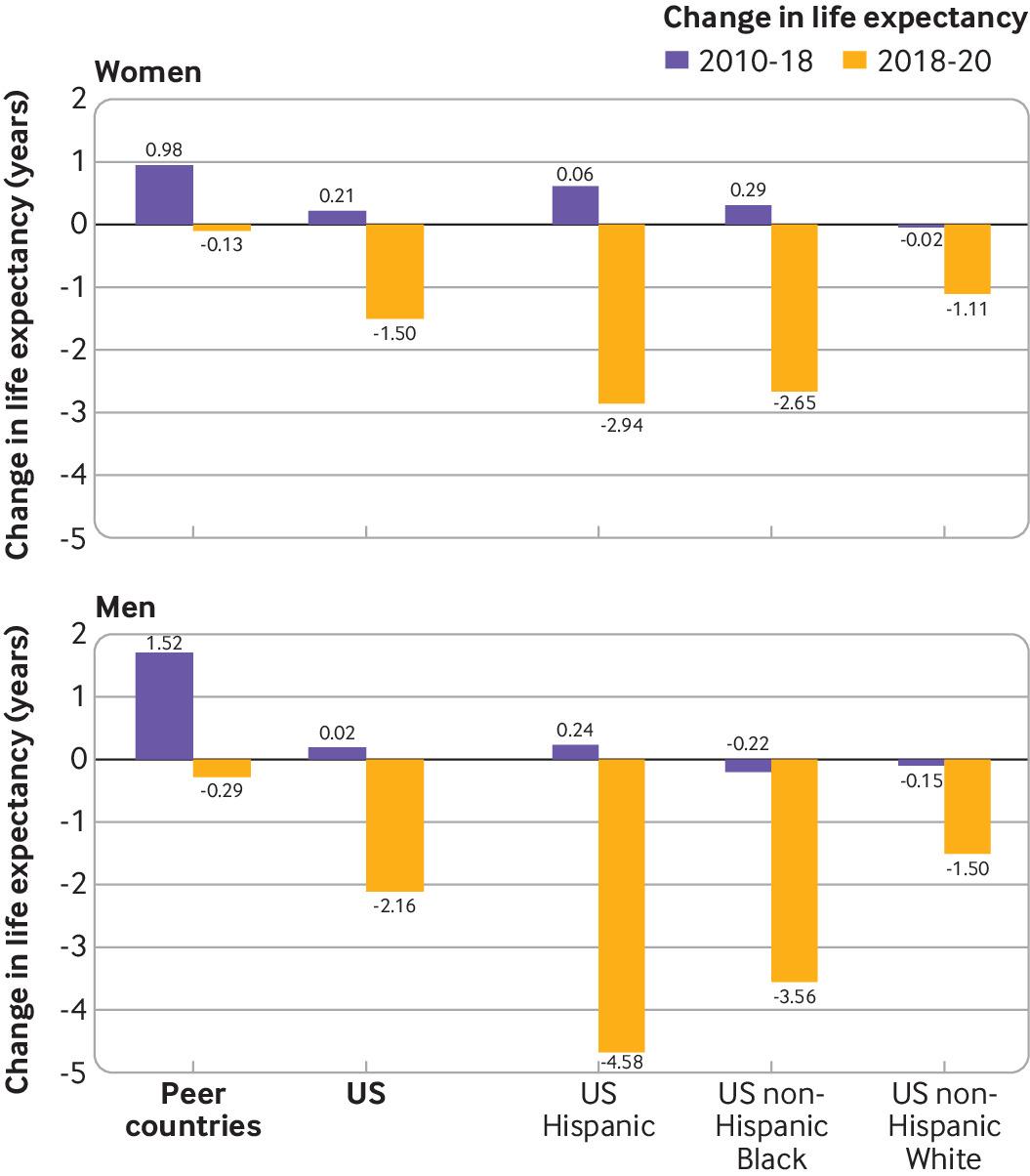Life expectancy in the United States fell 1.5 years in 2020, and declined even more for members of the Latinx community, according to a recent report by the Centers for Disease Control and Prevention.
The decline represents the sharpest life expectancy fall in a single year since World War II. “Life expectancy is supposed to be increasing,” Dr. Steven Woolf, Professor of Family Medicine and Population Health at Virginia Commonwealth University, told Latina.

In June of 2021, Dr. Woolf published a research paper comparing the U.S. life expectancy to other developed countries. It revealed that the United States had a much larger decrease in life expectancy between 2018 and 2020 than 16 other developed nations such as Switzerland and the United Kingdom. This was especially true when comparing the life expectancy of people of color in the U.S. to the general population of other countries.
Members of the Latinx community had a reduction in life expectancy 18 times higher than the average in peer countries. Latinas specifically lost even more years than the Latinx community at large, with a reduction in life expectancy 23 times greater than those for women in peer countries.

“Systemic racism and other forms of discrimination in America place Black and brown people at higher risk for disease and erect barriers to better health and health care,” Dr. Woolf said.
The decrease in Latino life expectancy comes as a blow to Latinos’ historically high life expectancy in comparison to their non-Hispanic white peers: the so-called “Hispanic Paradox.” While Latinos tend to have lower-paying jobs and harsher life conditions than their white counterparts, the “Hispanic Paradox” is that Latinos tend to have a longer life expectancy, especially those who are recent immigrants to the country.

“That advantage has begun to dissipate in recent years and was non-existent during the COVID-19 pandemic. Hispanic patients were at far greater risk of dying from COVID-19 than white patients,” Dr. Woolf said. “We have structures and policies in our society that systematically block the doors of opportunity and good health for Black and brown people. Until we take down those barriers, and address the systemic biases behind them, I fear the disparities will persist.”
Life expectancy isn’t a prediction of how long we expect a baby to live but rather an estimate of the mortality rate for a specific year. “The plunge in life expectancy that we report for 2020 is not a prediction of what will happen in future years but an indication of how death rates skyrocketed during 2020,” Dr. Woolf said. He considers it urgent to address the decline in life expectancy, otherwise Americans will be dying at higher rates than people in other developed countries. “It’s never too late,” he said. “Today’s children can live longer if we act, and tomorrow’s adults will be more productive and healthier.”
All tables and charts taken from: Effect of the covid-19 pandemic in 2020 on life expectancy across populations in the USA and other high income countries: simulations of provisional mortality data. BMJ 2021; 373:n1343.









